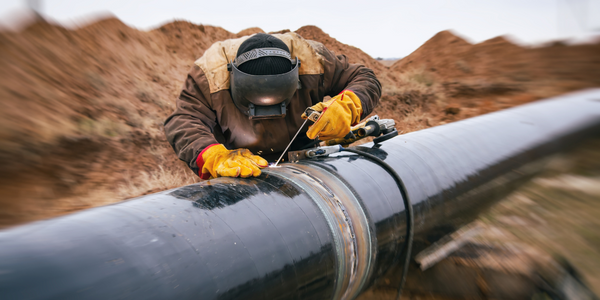使用物联网进行油气改造

技术
- 分析与建模 - 大数据分析
- 应用基础设施与中间件 - 数据可视化
- 基础设施即服务 (IaaS) - 其他
- 网络与连接 - 低功耗广域网
适用行业
- 石油和天然气
客户
未公开
关于客户
一家全球石油公司
挑战
一家大型石油生产商希望为其基础设施和资产启用物联网,但缺乏技术专长。
解决方案
Amyx+ 正在监督 RFP 流程和供应商选择,以确定一流的技术和解决方案,以对其基础设施和资产进行改造。 Amyx+ 正在评估针对极端天气和环境条件的最佳物联网设备和传感器;通过不同的电信和云解决方案,跨越数千公里和跨越其他主权边界的标准、协议和通信的最佳组合;物联网网状网络支持在没有可靠 GSM/3G/LTE/卫星覆盖的地区进行通信;远程监控和跟踪资产;数据收集、转换和存储在云端;数据分析和数据可视化;并与其他工作流程和系统集成以进行升级和作业处理。

Case Study missing?
Start adding your own!
Register with your work email and create a new case study profile for your business.
相关案例.

Case Study
Taking Oil and Gas Exploration to the Next Level
DownUnder GeoSolutions (DUG) wanted to increase computing performance by 5 to 10 times to improve seismic processing. The solution must build on current architecture software investments without sacrificing existing software and scale computing without scaling IT infrastructure costs.

Case Study
Remote Wellhead Monitoring
Each wellhead was equipped with various sensors and meters that needed to be monitored and controlled from a central HMI, often miles away from the assets in the field. Redundant solar and wind generators were installed at each wellhead to support the electrical needs of the pumpstations, temperature meters, cameras, and cellular modules. In addition to asset management and remote control capabilities, data logging for remote surveillance and alarm notifications was a key demand from the customer. Terra Ferma’s solution needed to be power efficient, reliable, and capable of supporting high-bandwidth data-feeds. They needed a multi-link cellular connection to a central server that sustained reliable and redundant monitoring and control of flow meters, temperature sensors, power supply, and event-logging; including video and image files. This open-standard network needed to interface with the existing SCADA and proprietary network management software.

Case Study
Refinery Saves Over $700,000 with Smart Wireless
One of the largest petroleum refineries in the world is equipped to refine various types of crude oil and manufacture various grades of fuel from motor gasoline to Aviation Turbine Fuel. Due to wear and tear, eight hydrogen valves in each refinery were leaking, and each cost $1800 per ton of hydrogen vented. The plant also had leakage on nearly 30 flare control hydrocarbon valves. The refinery wanted a continuous, online monitoring system that could catch leaks early, minimize hydrogen and hydrocarbon production losses, and improve safety for maintenance.





